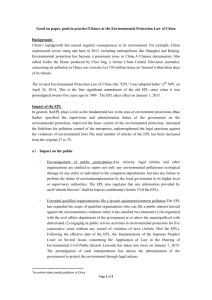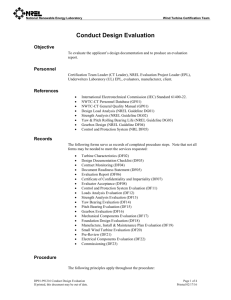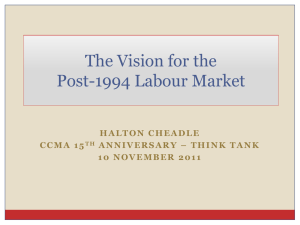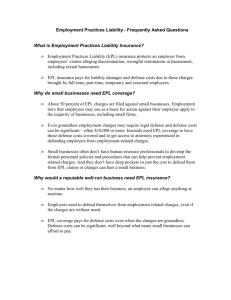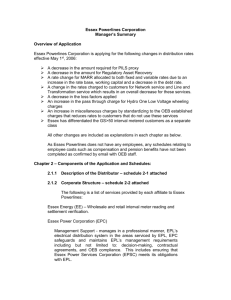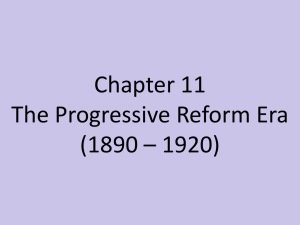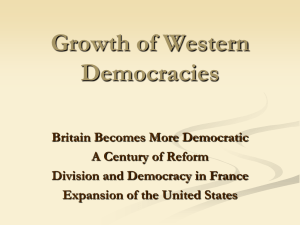Klara Stovicek (EC)
advertisement
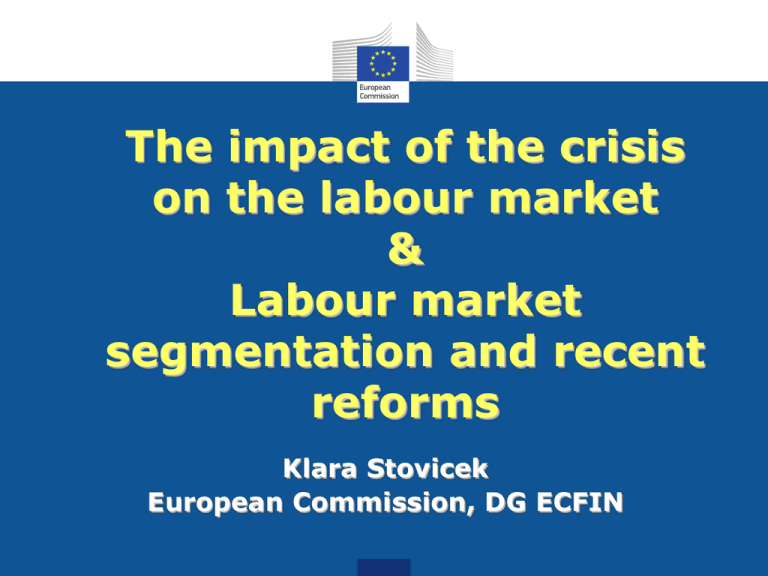
The impact of the crisis on the labour market & Labour market segmentation and recent reforms Klara Stovicek European Commission, DG ECFIN Labour market developments in the EU 230,000 000's persons 30,000 - 6 Millions Employment (Lhs) 225,000 25,000 220,000 20,000 Unemployment (Rhs) 15,000 215,000 q1 q2 q3 q4 q1 q2 q3 q4 q1 q2 q3 q4 q1 q2 q3 q4 q1 q2 q3 q4 q1 q2 q3 q4 q1 q2 q3 q4 q1 05 06 07 08 09 10 11 12 European Commission (2012): EU Employment and Social Situation Quarterly Review, June, forthcoming. Large diversity across EU countries 2008-2011 Outlook Weak, no substantial improvements over forecast horizon Young unemployme nt rate: In 2011: 21.3% in the EU, about 45% in Spain and Greece Young: at high risk of unemployment Unemployment rate 15-24 50 2011 el es • Labour market entrants 40 • High exposure to temporary jobs sk lt pt ie it bg lv ro pl hu se cyfr ee uk fi be lucz si dk mt 30 20 10 • High concentration in cyclicallysensitive industries • … But also preexisting structural weaknesses, including employment protection legislation (EPL) at de nl 0 0 10 20 30 40 50 Unemployment rate 25-64 EPL reforms 1990-2008 EPL indicator (OECD): liberalisation of fixed-term contracts 6 6 2008 Permanent contracts: 5 pt dese nl fr el at fi pl be hu ie it dk uk 3 2 1 4 es 2 3 pl hu 1 4 5 at 0 it fi dk de se nl ie uk 0 6 el be pt 2 1990 1 fr es 3 0 0 Temporary contracts 5 individual dismissals 4 2008 1990 1 2 3 4 5 6 Young: temporary jobs frequent where EPL for permanent contracts is high (individual dismissals) European Commission (2010): Labour market and wage developments in 2009 EPL reforms since 2008 At the top of the structural reform agenda in several Member States, e.g. ES, IT, PT Objectives: to reduce labour market segmentation, foster job creation and ease labour market adjustment: by reforming and promoting permanent contracts • Easing dismissal rules (individual and collective dismissals) • Reduction of costs of dismissals and uncertainty related to dismissals (individual and collective dismissals) • Enhancing the efficiency of the dispute settlement procedures by revising temporary contracts PERMANENT CONTRACTS EPL reforms since 2008: individual dismissals • Simplification of notification procedures (IT, PT) • Clarification and broadening of the scope of justified dismissals Dismissals on economic grounds: Justified if revenues or sales fall for 3 consecutive quarters (ES) Include also dismissals based on organisational reasons (ES) Employers are not obliged to look for a compatible job within the firm to prevent dismissal anymore (PT) A tenure rule (last in first out) is abolished if more than one worker in a section is at risk of redundancy (PT) Dismissals based on incompetence: Justified also in case of no changes to the work place or nature of a job (PT) Justified for qualified employees if they fail to meet agreed objectives (PT) PERMANENT CONTRACTS EPL reforms since 2008: individual dismissals • Reduction of costs and uncertainties related to justified dismissals Severance payments: Reduced from 30 to 20 days per year of work (ongoing discussion to reduce further to 10 days); a minimum of 3 months of pay independently of tenure is abolished; a maximum is set at 12months (PT) Maximum wage to calculate severance payments is limited to 20*minimum wage (PT) Creation of a portable fund to create incentives to job-to-job mobility, under discussion (PT) Creation of the Wage Guarantee fund (FOGASA) to contribute to severance payments in case of firms with less than 25 workers, up to 1 year (ES) PERMANENT CONTRACTS EPL reforms since 2008: individual dismissals • Reduction of costs and uncertainties related to unjustified dismissals Severance payments: Reduced from 45 to 33 days per year of work, a maximum is reduced from 42 to 24 months (ES) Interim wages during the trial against unfair dismissal: Capped at 12 months (IT, PT) Abolished if the employer opts for severance payments (ES) Reinstatement: Its scope is reduced in firms with more than 15 employees (IT), including as a result of procedural errors (IT, PT) EPL reform since 2008 5 Permanent contracts: 4 individual dismissals 3 2 1 PT SI CZ DE SE LU NL SK PT after reform ES FR AT KOR EL ES after 2010 reform FI ES after 2012 reform PL EL after 2010 reform HU JPN IT BE IE after reform DK IE IT after reform AUS CAN CHE UK USA 0 Own calculations based on the OECD methodology Update of the EPL indicator •Based on the OECD standard methodology (indicators are indicative, not official OECD figures!) • Only for selected countries • Not all features of the EPL reforms are captured by the indicator Results: EPL was reduced in the countries which have the strongest segmentation (fixedterm, selfemployment) Conclusions (1) • The impact of the crisis on labour market developments has been uneven across countries and demographic groups • The crisis gave a decisive push to the recent EPL reforms, which would be very difficult to implement otherwise • The impact will be country specific, depending on how agents will internalize reforms • Relevant are also complementarities with other reforms (e.g. those that address collective bargaining, unemployment benefits, internal flexibility, apprenticeship and training) Conclusions (2) • Slovenia has a country specific recommendation (CSR) in the area of EPL: “Adjust employment protection legislation as regards permanent contracts in order to reduce labour market segmentation, in consultation with social partners and in accordance with national practices. Further tackle the parallel labour market caused by student work.” • Thank you
